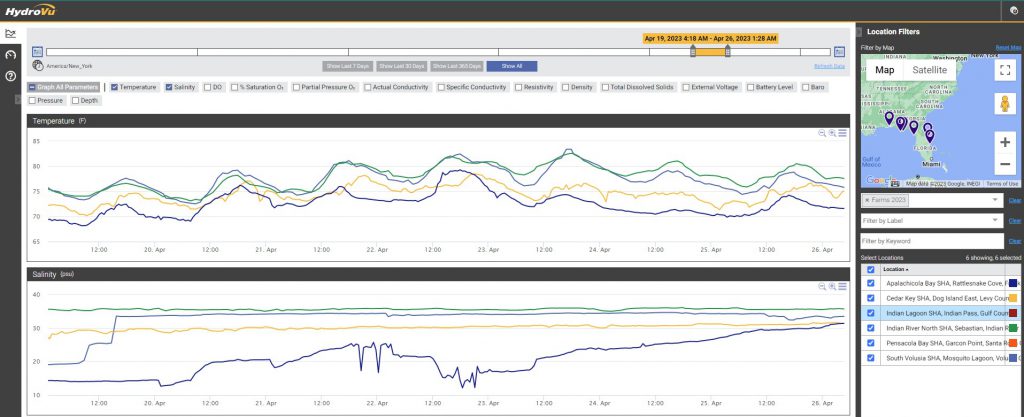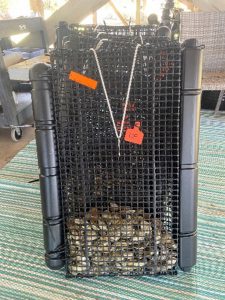In 2023, a network of growers was formed across the state to increase oyster mortality monitoring efforts and provide replication and environmental gradients. Growers received equipment, sampling supplies, and guidance so water quality, oyster performance, and health information could be obtained.
Water Quality Commercial farms located in eight Shellfish Harvesting Areas (SHAs) were identified to monitor salinity and temperature. In-situ Aquatroll 100 dataloggers were deployed inside oyster bags and collect data hourly. Grower operators maintain loggers and download data via Bluetooth to a mobile app. Data are sent to UF staff and posted to the website dashboard. Data are not real-time (“live”) or error corrected. Archived data are error-corrected and provided monthly in graphic format and can be viewed here.
(SHAs) were identified to monitor salinity and temperature. In-situ Aquatroll 100 dataloggers were deployed inside oyster bags and collect data hourly. Grower operators maintain loggers and download data via Bluetooth to a mobile app. Data are sent to UF staff and posted to the website dashboard. Data are not real-time (“live”) or error corrected. Archived data are error-corrected and provided monthly in graphic format and can be viewed here.
Knowing salinities at the lease areas may allow growers to make better decisions on when to stock, transfer, and harvest oysters. Predictions for an El Ninõ to form are high (90% chance) for the 2023-24 winter. Flood predictions and river discharge information by the National Weather Service can be viewed here.
 Sentinel Oysters Large triploid oysters reared by UF were distributed to growers in April to observe performance of oysters from the same stock. Growers are providing culture gear, maintenance, and observations over the spring and summer.
Sentinel Oysters Large triploid oysters reared by UF were distributed to growers in April to observe performance of oysters from the same stock. Growers are providing culture gear, maintenance, and observations over the spring and summer.
Health Oyster health and pathology are being evaluated by the UF College of Veterinary Medicine. Oysters were sampled prior to farm deployment and will be sampled by growers when a mortality event occurs.
Phytoplankton Water samples are collected by growers and preserved weekly. If a mortality event occurs, phytoplankton samples can be scanned at the UF Algal Ecology Lab for the presence of harmful species.
Additional information and updates can be found here: https://shellfish.ifas.ufl.edu/farms-2023/.



